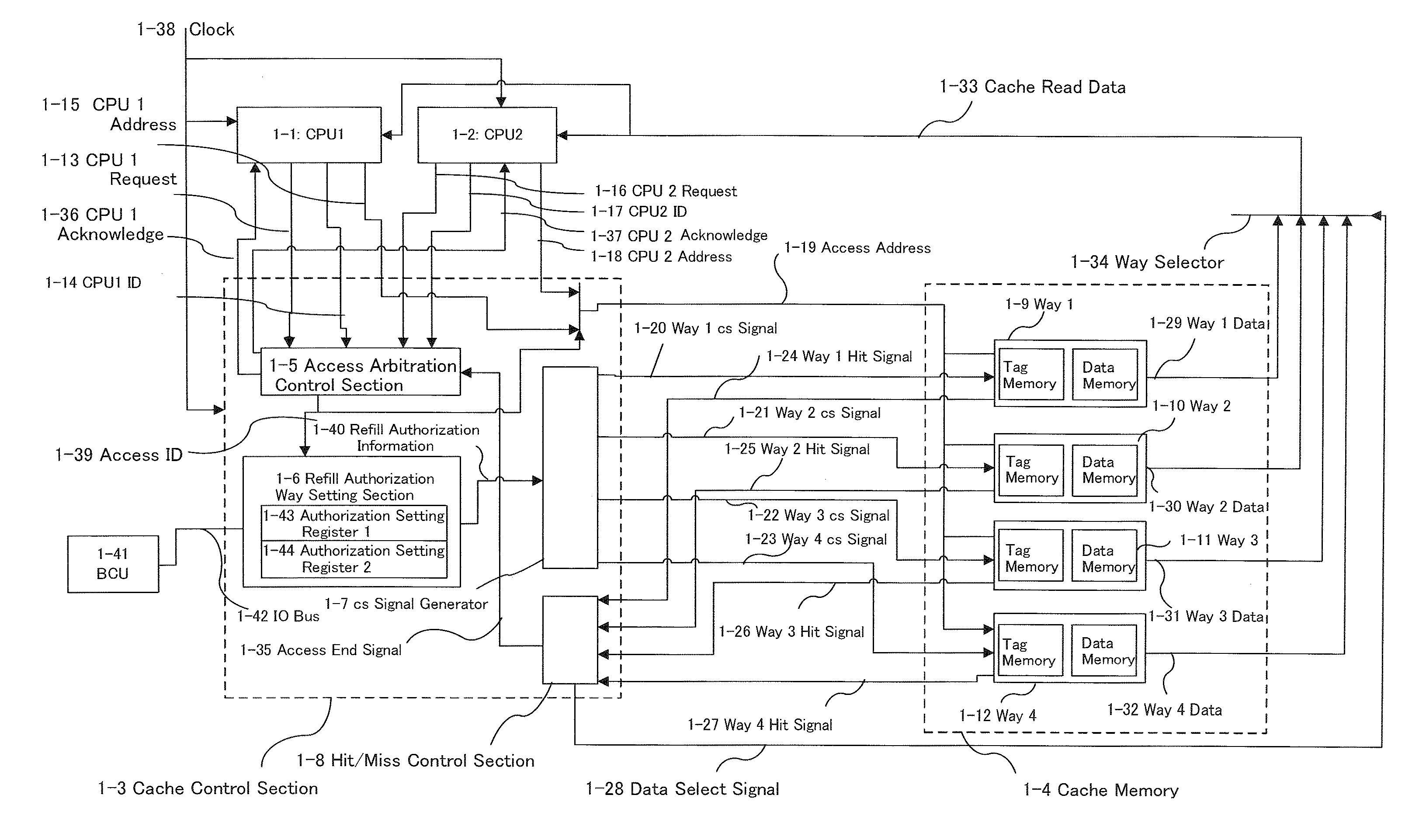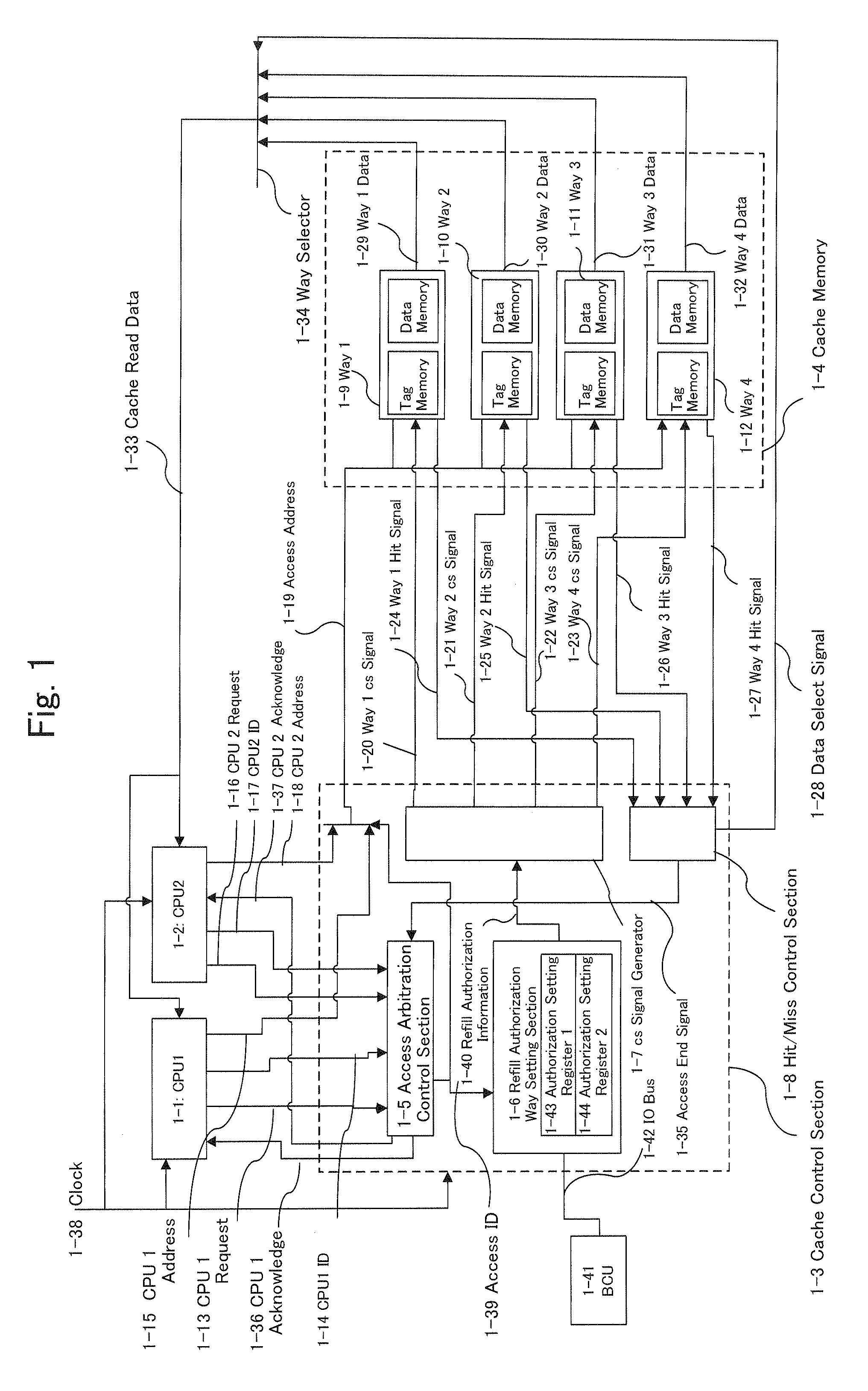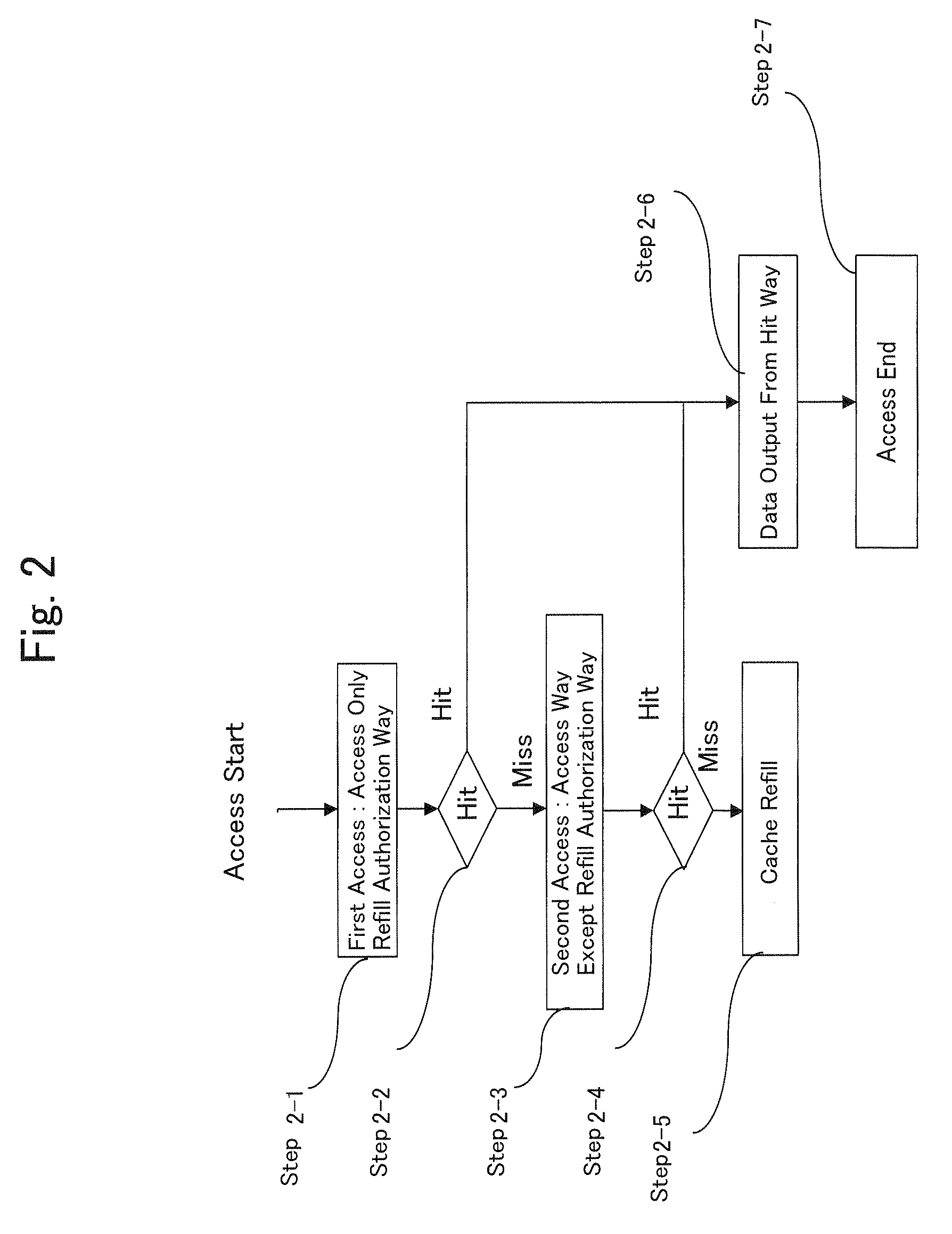Cache memory control method and cache memory control device
a control method and memory technology, applied in the direction of memory adressing/allocation/relocation, instruments, liquid/fluent solid measurement, etc., can solve the problems of insufficient effect, limited effectiveness of this method, wasteful power consumption state, etc., and achieve the effect of enabling power reduction of cache access without degrading the performance of cache access cycl
- Summary
- Abstract
- Description
- Claims
- Application Information
AI Technical Summary
Benefits of technology
Problems solved by technology
Method used
Image
Examples
embodiment 1
[0086]FIG. 1 illustrates a system configuration diagram of a cache memory control device in Embodiment 1. In FIG. 1, functional parts required for a cache hit operation at the time of a read access are shown. This system is operated by allowing a CPU 1 (1-1) and a CPU 2 (1-2) to share a cache memory (1-4) via a cache control section (1-3).
[0087]In the cache control section (1-3), the reference numeral (1-5) denotes an access arbitration control section, the reference numeral (1-6) denotes a refill authorization way setting section, the reference numeral (1-7) denotes a CS (Chip Select) signal generator, and the reference numeral (1-8) denotes a hit / miss control section. The reference numeral (1-43) denotes an authorization setting register 1, and the reference numeral (1-44) denotes an authorization setting register 2. The reference numeral (1-41) denotes a BCU (Bus Control Unit) functioning as a bus control section, and the reference numeral (1-42) denotes an IO (Input / Output) bus....
embodiment 2
[0130]FIG. 5 illustrates a flow chart of a cache access in Embodiment 2 of the present invention.
[0131]In Embodiment 2, only the number of the ways accessed during a second access differs from that in Embodiment 1, and the steps from the access start to a first access (i.e., Steps 2-1 and 2-2) and the steps subsequent to the second access (i.e., Steps 2-4, 2-5, 2-6 and 2-7) are similar to those in Embodiment 1.
[0132]In Embodiment 2, all the ways are accessed in the second access (Step 3-1).
[0133]FIG. 6 illustrates a timing diagram in Embodiment 2. The diagram shows the timing in the case where a hit has occurred in the way that is not allocated.
[0134]It should be noted that if a hit occurs in the allocated way, the access timing is exactly similar to that in Embodiment 1 (FIG. 3).
[0135]The operation of Cycle 6-1 is similar to that of Cycle 3-1 in FIG. 3.
[0136]In Cycle 6-1, since a hit does not occur in the way 1 and the way 2 which have been accessed, the way 1 hit signal (1-24) and...
embodiment 3
[0142]FIG. 7 illustrates a system configuration diagram of a cache memory control device in Embodiment 3. In FIG. 7, functional parts required for a cache hit operation at the time of a read access are shown.
[0143]A CPU (7-1) in this system is a CPU that executes a plurality of programs while switching information on internal resource such as a program counter by the hour, or a CPU that performs parallel execution of a plurality of programs by one CPU (multithread). Herein, the CPU (7-1) of the present embodiment is a CPU that performs a normal multithread operation and does not allow a thread to be switched during execution of a memory access.
[0144]The reference numeral (7-2) denotes an access control section, the reference numeral (7-3) denotes a CPU address, the reference numeral (7-4) denotes a CPU request, the reference numeral (7-5) denotes a CPU acknowledge, and the reference numeral (7-6) denotes a process ID. The reference numeral (7-7) denotes an authorization setting regi...
PUM
 Login to View More
Login to View More Abstract
Description
Claims
Application Information
 Login to View More
Login to View More - R&D
- Intellectual Property
- Life Sciences
- Materials
- Tech Scout
- Unparalleled Data Quality
- Higher Quality Content
- 60% Fewer Hallucinations
Browse by: Latest US Patents, China's latest patents, Technical Efficacy Thesaurus, Application Domain, Technology Topic, Popular Technical Reports.
© 2025 PatSnap. All rights reserved.Legal|Privacy policy|Modern Slavery Act Transparency Statement|Sitemap|About US| Contact US: help@patsnap.com



